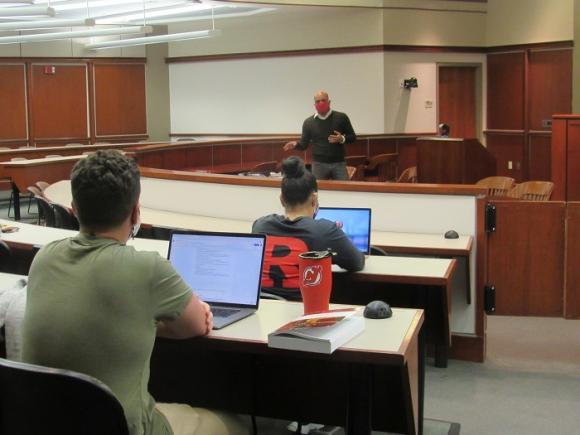The Function of Visual Help in Effective Trial Presentations: An Overview for Attorneys
The Function of Visual Help in Effective Trial Presentations: An Overview for Attorneys
Blog Article
Browsing the Intricacies of Test Presentations: Tips for Seamless Shipment and Compelling Disagreements
In the realm of lawful process, the art of test discussion stands as an essential determinant of success. The complexities integral in test presentations need a fragile equilibrium of skill, finesse, and strategy.

Understanding Test Purposes
To effectively navigate a test, it is crucial to have a clear understanding of the goals that need to be achieved. Before stepping into the court, lawful groups must specify their goals and desired outcomes. These objectives work as leading concepts throughout the trial, forming strategies and influencing decision-making procedures.
Recognizing test goals involves a detailed evaluation of the case, lawful precedents, and the customer's benefits. Trial Presentations. It requires a precise exam of the facts, determining vital concerns, and preparing for possible challenges. By establishing specific and measurable objectives, lawyers can customize their disagreements and presentations to straighten with the wanted results
In addition, a clear understanding of trial goals makes it possible for legal groups to focus on evidence, witnesses, and lawful debates successfully. It enables the growth of a systematic narrative that reverberates with the discretionary, reinforcing the general instance discussion.

Organizing Proof Properly
Having a clear understanding of test objectives lays the structure for arranging evidence successfully in lawful procedures. By aligning the discussion of proof with the preferred end results of the trial, legal groups can enhance their debates and enhance their persuasiveness.
Another key component in arranging evidence efficiently is establishing a logical flow. Offering proof in a coherent and sequential way can help develop a compelling story that sustains the legal arguments being made. In addition, making use of aesthetic help such as timelines, charts, or graphes can better improve the company of evidence and assist in making clear complex connections or series of occasions.
Moreover, making sure that all proof provided is admissible and relevant to the instance is vital. Inadmissible or pointless proof can diminish the stamina of the disagreement and potentially damage the reliability of today event. A meticulous testimonial and option process need to be undertaken to consist of just the most impactful and lawfully sound proof in the trial presentation.
Crafting Persuasive Narratives
Crafting engaging narratives plays a pivotal function in presenting convincing debates during legal proceedings. When creating a narrative for a trial discussion, it is essential to establish a clear story that highlights essential points and connects them in a systematic fashion. By weaving with each other proof, testament, and lawful disagreements right into a influential and cohesive narrative, legal specialists can effectively advocate for their clients and raise the probability of a desirable end result in the courtroom.
Understanding Visual Help
Effective use visual aids is essential to boosting the impact and clearness of test presentations. Aesthetic aids, when used tactically, have the power to streamline complicated information, enhance vital points, and leave an enduring impact on the discretionary. To understand visual aids in test discussions, it is critical to ensure that they are clear, concise, and pertinent to the debates being made.
When integrating visual aids, such as charts, photographs, timelines, or graphs, into a trial discussion, it is vital to keep them aesthetically appealing yet expert. The visuals need to enhance the verbal debates, providing a graph of more tips here the info being talked about without frustrating the audience with unneeded information.
Additionally, exercising with the aesthetic help in advance is crucial to guarantee a smooth distribution throughout the test. Acquainting oneself with the material, transitions, and timings of each aesthetic help can help keep the flow of the discussion and protect against technological glitches that might emerge.
Delivering Impactful Closing Arguments
A compelling closing disagreement serves as the conclusion of a test presentation, encapsulating the core story and persuading the judge and court towards a desirable choice. Begin by outlining the major arguments that sustain your customer's position, highlighting why the evidence presented throughout the trial sustains your narrative.
In addition, incorporating emotional allure can further enhance your closing disagreement. Ultimately, a well-crafted closing disagreement need to leave a lasting impact, compelling the court and court to rule in your customer's favor.
Verdict
In conclusion, mastering trial discussions includes recognizing purposes, organizing proof, crafting narratives, using visual help, and supplying impactful closing disagreements. By implementing these techniques efficiently, attorneys click this can provide their situation effortlessly and make engaging arguments in the court. you could look here It is critical to navigate the complexities of test presentations with precision and ability to achieve success in legal proceedings.
By lining up the discussion of proof with the wanted end results of the trial, lawful teams can reinforce their arguments and boost their persuasiveness (Trial Presentations). To master aesthetic aids in trial discussions, it is critical to ensure that they are clear, concise, and appropriate to the arguments being made
An engaging closing debate offers as the conclusion of a test discussion, enveloping the core story and persuading the court and court towards a favorable choice. Begin by describing the primary disagreements that support your client's setting, highlighting why the proof offered throughout the test supports your narrative.In verdict, mastering test presentations entails recognizing objectives, arranging evidence, crafting narratives, making use of aesthetic help, and delivering impactful closing disagreements.
Report this page